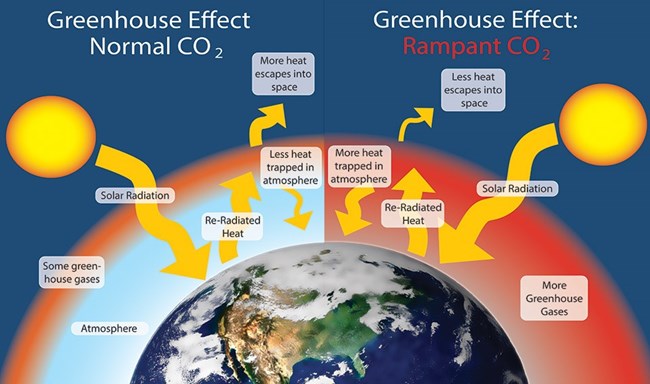Protecting John Muir National Historic Site in a Changing ClimateThe impacts of climate change are already being felt across America’s National Parks, including John Muir National Historic Site. In the coming decades, challenges like extreme heat waves, prolonged droughts, increased wildfires, and habitat destruction threaten the delicate balance of plant and animal species that make this site so special. Coastal flooding and erosion further complicate the preservation of natural and cultural resources in many areas. At John Muir National Historic Site, protecting sensitive ecosystems is a vital part of the National Park Service’s mission to safeguard America’s natural heritage for future generations. To address these challenges, the National Park Service is taking decisive action. This includes reducing fossil fuel emissions, educating staff and visitors about climate change and its solutions, and adapting land management strategies to meet the demands of an evolving environment. Together, we can work to preserve the beauty and biodiversity of John Muir National Historic Site in the face of a changing world. What is climate change?"Climate change" describes how our planet's temperature, precipitation, humidity, wind, and pressure are changing over time. "Climate" means the average conditions in a place over 30 year periods, in contrast to "weather" which describes shorter-term, daily patterns. So although we may experience cold days, the average temperature of our planet is currently increasing every year, as is the frequency of extreme events like wildfires. 
NPS / Will Elder How does climate change work?The atmosphere is like a blanket that surrounds the earth. It filters out harmful ultraviolet radiation, while letting in the sun's warming rays. When humans burn fossil fuels (like coal and natural gas) for energy, we add heat-trapping gasses (like carbon dioxide) into the atmosphere "blanket". The thicker the blanket gets, the more heat it traps underneath. This blanket effect leads to warming, which disrupts the climate. How will this affect John Muir National Historic Site?Ongoing and future climate change will likely affect all aspects of park management, including natural and cultural resource protection as well as park operations and visitor experience. Here are the most likely changes that John Muir will experience in the coming decades:
Plants will become more drought stressed as temperatures increase, making them more vulnerable to pathogens and invasive species. Planning for ChangeEffective planning must be grounded in a sound understanding of the past and present conditions and projected future change. The San Francisco Bay Area Inventory and Monitoring (I&M) Program collects long-term data on key park natural resources to track changes in plant and animal communities that will help illuminate the effects of climate change on our parks. What can you do about climate change?Recent climatic conditions are already shifting to be more extreme than what we've seen in the past. But how bad it gets depends on how fossil fuel emissions change in the next decade. Reducing our emissions of heat-trapping gases, starting right here in California, is the solution. Everyone plays a part in achieving that goal. Many actions may seem small on an individual scale, but remember that changes in a whole community can make a real contribution.
Source: NPS DataStore Saved Search 3704. To search for additional information, visit the NPS DataStore. Quick Reads |
Last updated: December 19, 2024
